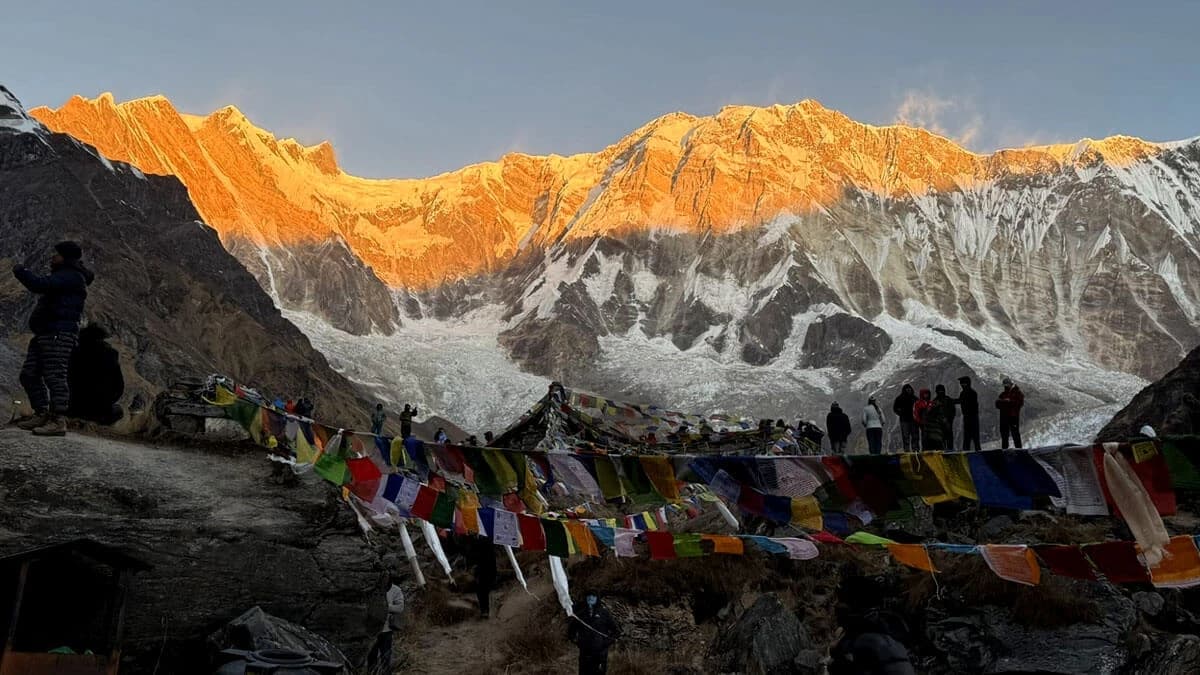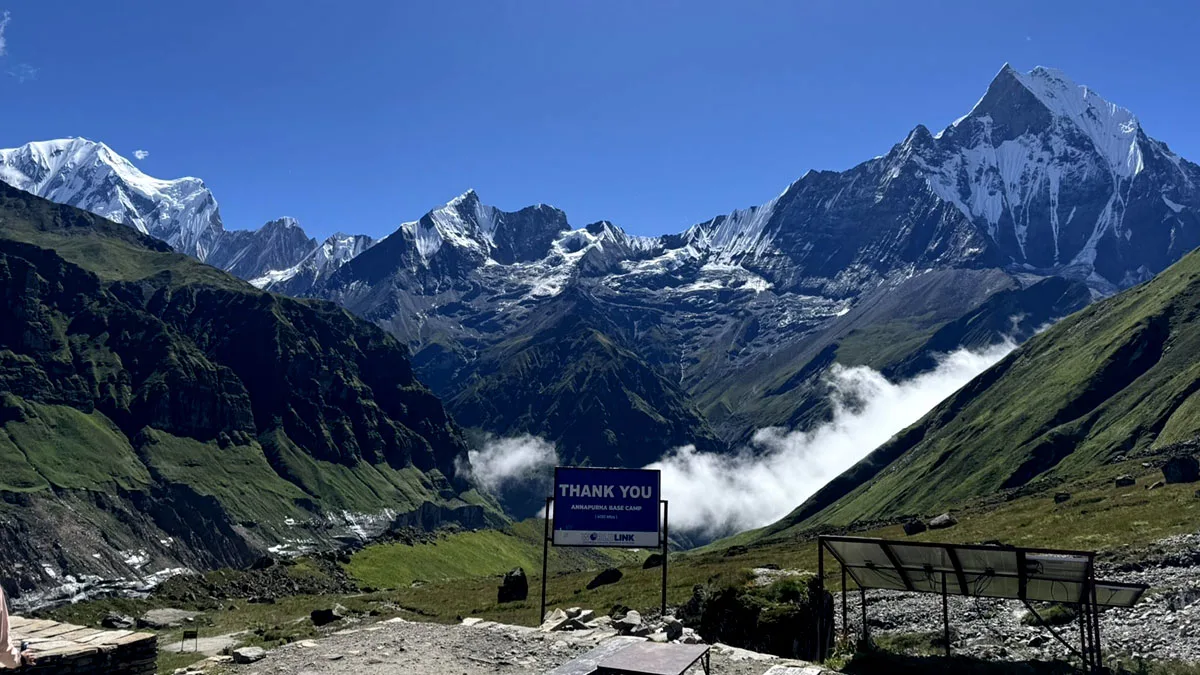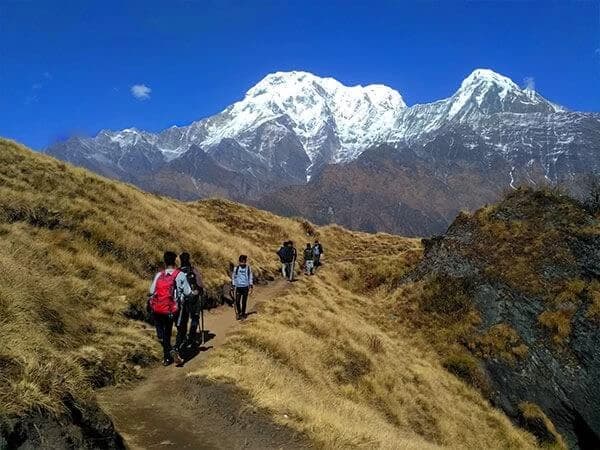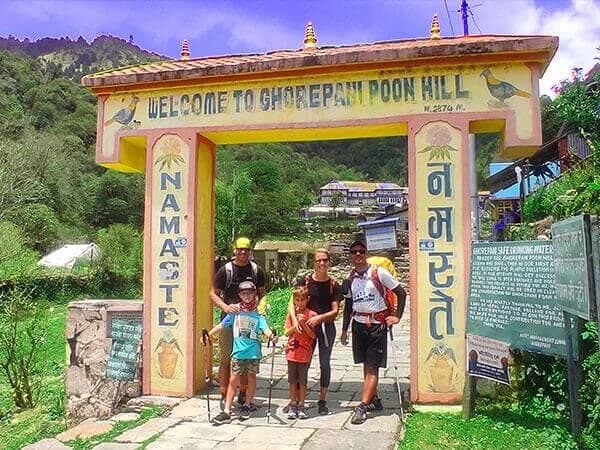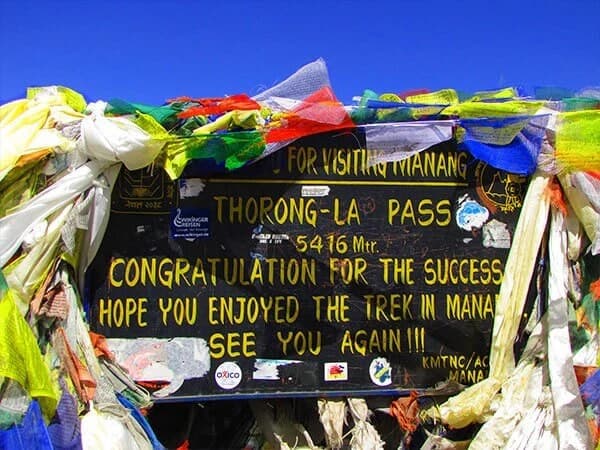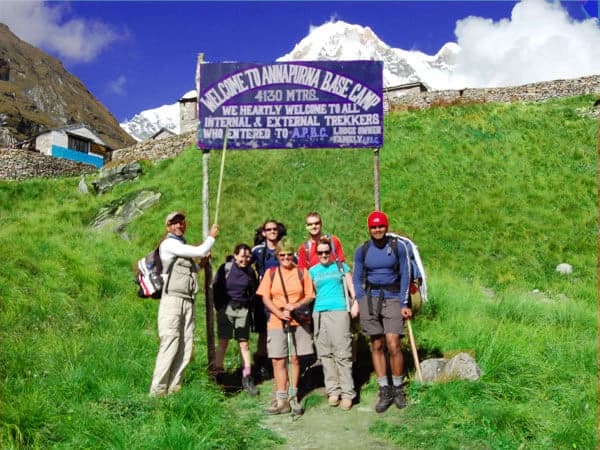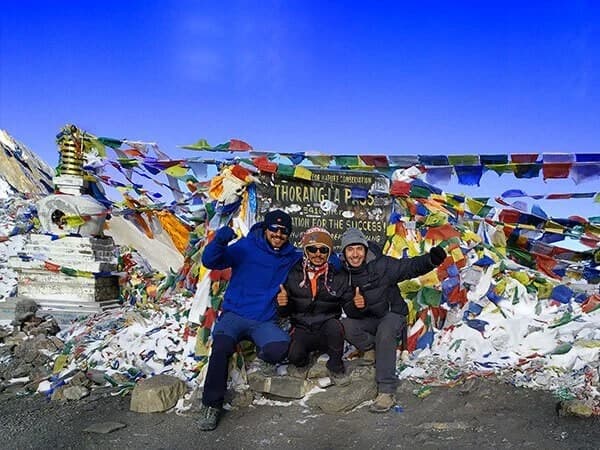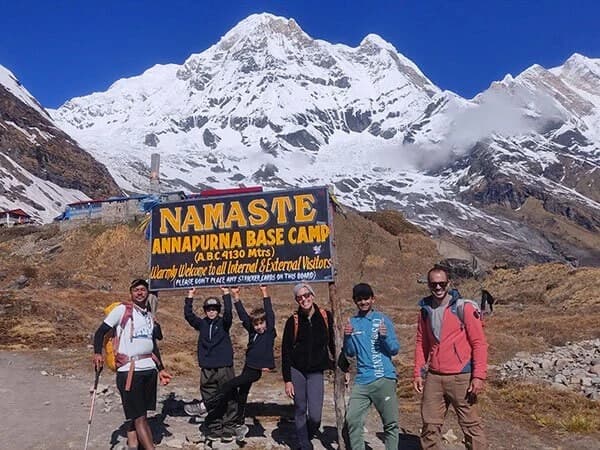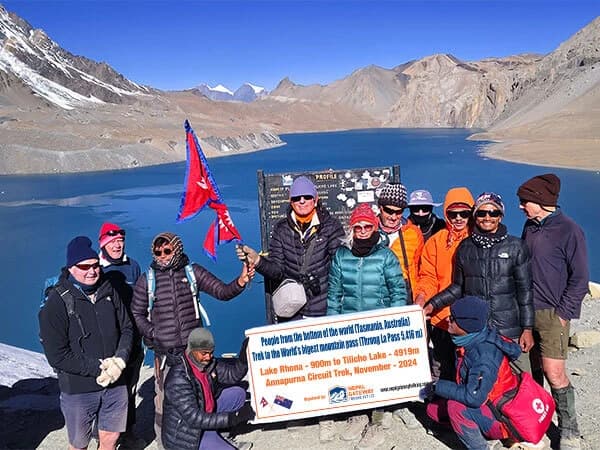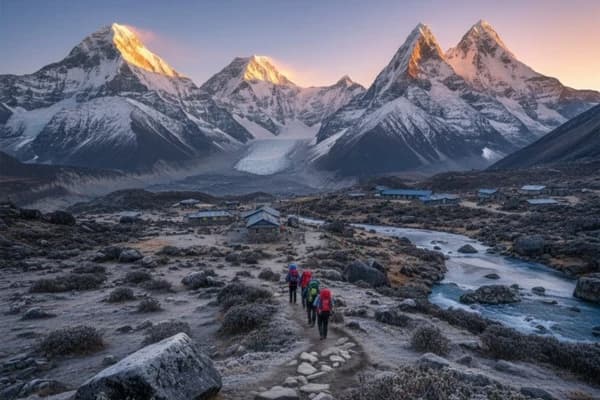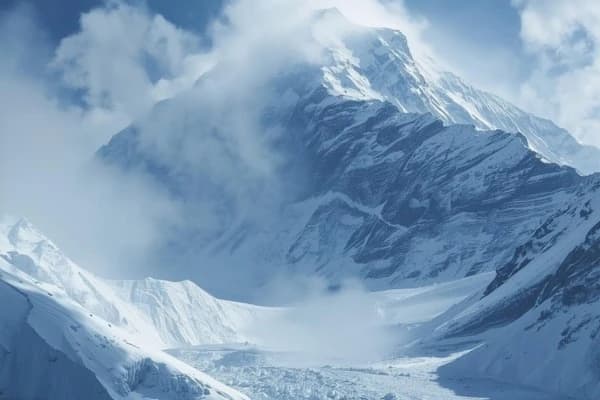The Annapurna Sanctuary is a high glacial basin in central Nepal, sitting at about 4,130 meters above sea level and around 40 km north of Pokhara. It is surrounded by the peaks of the Annapurna massif, many of which rise above 7,000 meters. Glacial streams from the surrounding mountains feed the valley, which is shaped like a natural arena.
The Gurung people of the area also hold the sanctuary in high regard. The "Fish Tail" mountain, Machapuchare, is thought to be the home of the god Shiva. The region is now a part of Nepal's largest protected area, the Annapurna Conservation Area, where hikers can respect local culture while discovering unusual plants, rock formations, and views of the high Himalayas.
This guide will explain why the Annapurna Sanctuary is one of Nepal's most remarkable natural and geological treasures.
Explore the Annapurna Sanctuary with Nepal Gateway Trekking and experience sacred peaks, rare wildlife, and unique Himalayan landscapes.
Geography and Location of Annapurna Sanctuary
The Annapurna Sanctuary is right in the middle of the Annapurna Conservation Area in central Nepal. When visiting, you'll see that it resembles a massive natural bowl encircled by some of the world's tallest mountains, including Hiunchuli, Machapuchare, and Annapurna I. The Modi Khola River, which flows south through greenery and Gurung villages before arriving in Pokhara, drains the valley.
The basin’s location and high walls make it feel completely enclosed, almost like a secret world. The only main entry point is through a narrow gorge along the Modi Khola valley. Because of its shape and elevation, the sanctuary has its own microclimate, supporting both tropical forests and alpine meadows within a short distance.
Key Peaks
Three major mountains - Machapuchare, Hiunchuli, and Annapurna Massif- define the sanctuary's skyline. Together, these peaks create the natural walls that give the Annapurna Sanctuary its isolated, otherworldly charm.
- Machapuchare (6,993 m): Known for its distinct “fish-tail” shape, this peak is considered sacred and is off-limits to climbers.
- Hiunchuli (6,441 m): The southern guardian of the sanctuary, often covered in mist.
- Annapurna Massif: It includes several peaks above 7,000 meters like Annapurna I, standing tall at 8,091 meters (10th highest peak in the world), Annapurna II (7,937 m), Annapurna III (7,555 m), Annapurna IV (7,525 m), and Annapurna South (7,219 m).
Geological Features of Annapurna Sanctuary
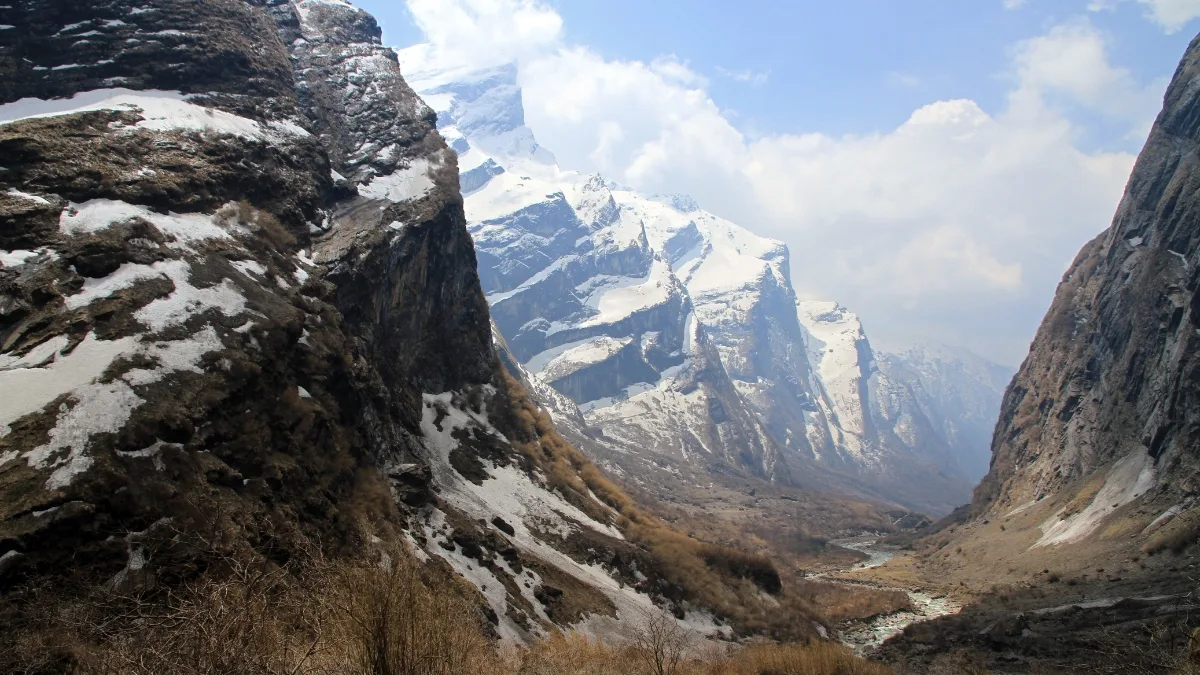
The Annapurna Sanctuary is like a living museum of Himalayan rocks and land. If you visit, you’ll learn it was formed millions of years ago when the Indian plate smashed into the Eurasian plate. Over time, glaciers carved deep valleys and left behind rocky cliffs, moraines, and terraces that shape the landscape you see today.
The area is rich in metamorphic rocks like schist and gneiss, mixed with younger sediment layers. The soil varies from fertile humus in the lower forests to gravelly moraines near the base camp. These geological layers support diverse vegetation, ranging from dense rhododendron forests to alpine meadows.
Glacial Features
You can still see clear traces of glaciers across the Annapurna Sanctuary. This blend of rock, ice, and river systems makes the Annapurna Sanctuary one of Nepal’s finest examples of natural high-altitude geology.
- Lateral and terminal moraines around the Annapurna Base Camp area.
- Steep glacial cliffs and snowfields reflect centuries of ice movement.
- Streams from melting snow converge into the Modi Khola River, which shapes the valley below.
Flora and Fauna Found in Annapurna Sanctuary
The sanctuary sits inside the Annapurna Conservation Area, the largest protected region in Nepal. Because it rises from about 1,000 to over 4,000 meters, it holds several ecosystems in one region, from subtropical forests to alpine tundra.
In the lower zones, you’ll find bamboo groves, oak, and rhododendron forests, which burst into colour during spring. Higher up, juniper and dwarf shrubs cover the hillsides. Alpine meadows bloom briefly in summer, filled with hardy wildflowers adapted to the cold winds.
Wildlife here is just as diverse. Common sightings include:
- Himalayan tahr and musk deer on the grassy slopes.
- Langurs, red pandas, and Himalayan black bears in the forest belt.
- More than 400 bird species, including the impeyan pheasant (Danphe), Nepal’s national bird.
|
Category |
Notable Species |
|
Mammals |
Himalayan tahr, musk deer, red panda, snow leopard (rare) |
|
Birds |
Impeyan pheasant, snow partridge, Himalayan monal |
|
Plants |
Rhododendron, juniper, bamboo, alpine asters |
Cultural and Spiritual Significance
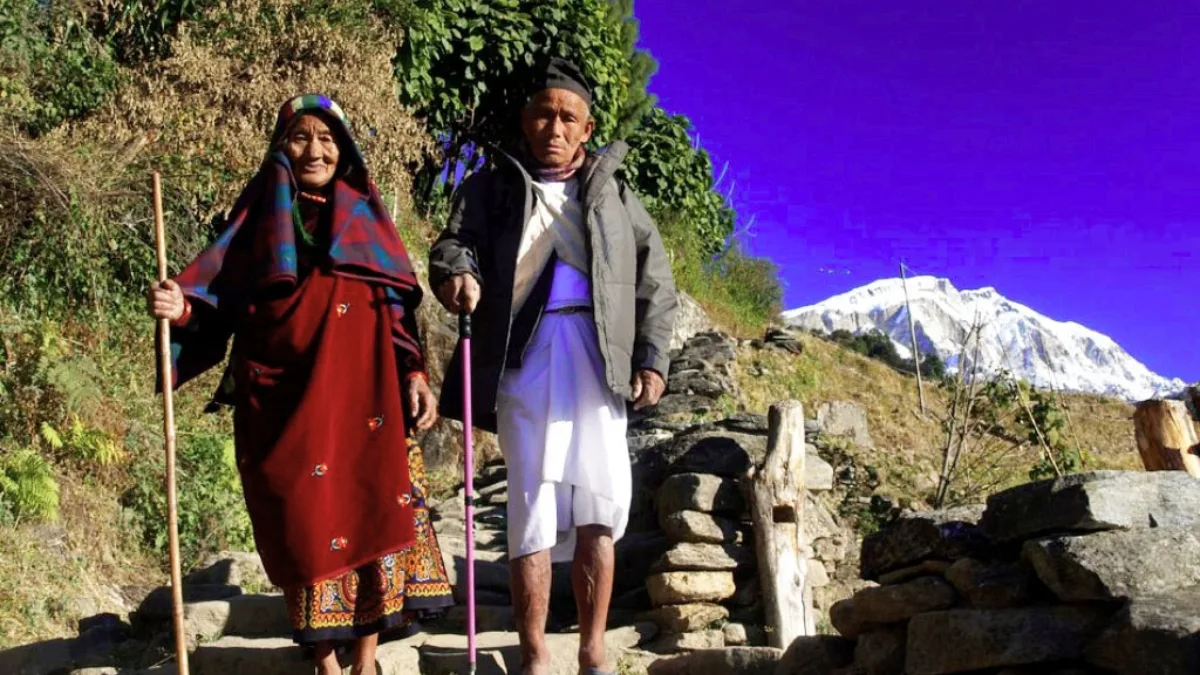
For the Gurung people living around the Annapurna Sanctuary, this place is more than just mountains and forests, it is really special and sacred. They believe that Machapuchare, the fish tail mountain, is where the god Shiva lives. Because of this, climbing it is not allowed to show respect.
The locals also do traditional rituals that are connected to the land and seasons. Before going to higher places, they used to make small offerings for safety and good luck. These traditions show visitors that the sanctuary is not just a trekking path, it is a spiritual place shaped by faith and nature.
Trek through the heart of the Himalayas, where Gurung traditions and the striking slopes of Machapuchare await.
If you want to know more about the people of the Himalayas, you should definitely trek through Annapurna Snactuary.
Why is Annapurna Sanctuary a Popular Trekking Destination?
Even though it’s smaller than other Himalayan regions, the Annapurna Sanctuary attracts trekkers for its stunning diversity. Within a few days of walking, travellers move from rice terraces to snow-covered valleys surrounded by peaks over 7,000 meters.
Trekkers are drawn by:
- The panoramic views of the Annapurna range from the base camp.
- The mix of flora, fauna, and changing landscapes at different altitudes.
- The chance to learn about Gurung culture and visit traditional villages.
- Seasonal highlights like the spring rhododendron bloom or clear autumn skies.
Environmental Importance and Conservation of Annapurna Sanctuary
The Annapurna Sanctuary is one of Nepal's first and biggest conservation projects, called the Annapurna Conservation Area Project (ACAP). Its primary objectives are to support locals, preserve the environment, and balance tourism.
Thousands of people downstream receive their water from the region's rivers and glaciers. Its biodiversity serves as a vital genetic reservoir for Himalayan species, and its forests aid in regulating the local climate and storing carbon.
Threats & Protection Efforts
- Climate change: Shrinking glaciers and unpredictable weather.
- Human activity: Litter, overgrazing, and unsustainable tourism.
- Deforestation: Use of firewood and trail expansion.
- Conservation efforts: Local committees, eco-lodges, waste-management projects, and educational programs under ACAP.
Seasonal Highlights of Annapurna Sanctuary
Whether it's mountain photography, snowfields, or wildflowers, knowing what to expect helps travellers plan a trip that fits their interests. The sanctuary experiences different hues and moods with each season.
Spring (March-May)
Spring in the Annapurna Sanctuary is a time of new life and growth. Rhododendrons bloom all over the lower forests, giving food and shelter to birds, insects, and other animals. During this season, you can really see how everything in the sanctuary is connected and why responsible trekking is important to protect these fragile ecosystems.
Summer / Monsoon (June-August)
During the monsoon, heavy rains turn the sanctuary into a bright, green paradise. Forests and meadows grow strong, providing a home to a variety of wildlife, from animals to migratory birds. But the rain also makes trails slippery and causes erosion, so trekkers need to be extra careful while exploring.
Autumn (September-November)
Autumn brings clear skies, fresh air, and steady weather that help both plants and animals. Trekking in this season is easier on the trails, so the ecosystems stay mostly undisturbed. The mix of colourful landscapes and healthy nature really shows the sanctuary’s strength and beauty.
Winter (December-February)
Winter covers the sanctuary in snow, protecting the fragile alpine soil and keeping people away from the higher areas. Many animals save energy or move to lower spots, while plants stay asleep under the snow. This quiet season gives the ecosystem a chance to rest and get ready for new growth in spring.
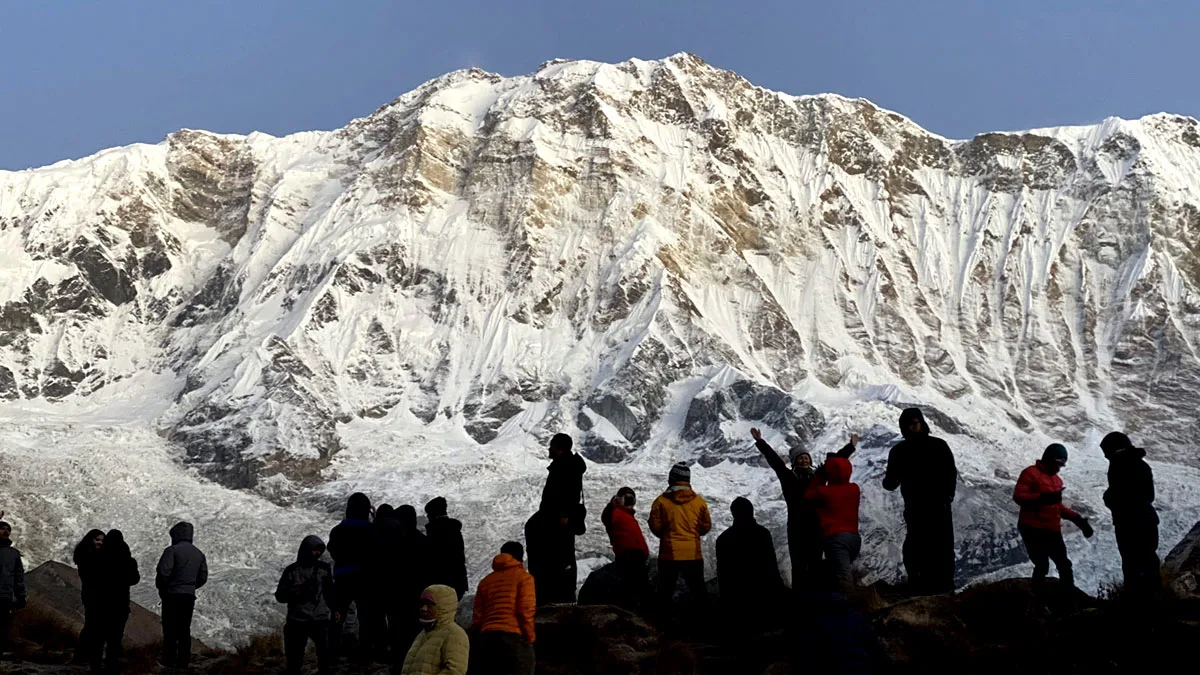
Photography and Exploration Tips
When you visit the Annapurna Sanctuary, you can capture its stunning landscapes while protecting the environment. Trek early in the morning or late in the afternoon to get the best light without disturbing wildlife.
Always follow the marked trails so you don’t hurt the fragile soil and plants, and respect local traditions to protect their culture and beliefs. By paying attention to the seasons and how animals behave, you can take photos responsibly and help keep the sanctuary safe for people who visit later.
Best Viewpoints:
- Annapurna Base Camp offers amazing sunrise and sunset views of Annapurna I and nearby mountains.
- Machapuchare Base Camp gives up-close views of the sacred “fish-tail” mountain.
- Deurali Ridge has great views of the Modi Khola valley and nearby mountain meadows.
- Sinuwa and Bamboo Zones are perfect spots to see layered forests and wildlife.
Tips for Capturing the Best Views:
- Hike and take photos in the early morning or late afternoon for soft, warm light.
- Use a tripod for long-exposure or steady landscape photography.
- Avoid using flash so as not to disturb wildlife.
- Avoid getting too close to flora, animals, and places of cultural significance.
Final Thoughts
The Annapurna Sanctuary offers visitors a glimpse of the natural and spiritual wonders of the Himalayas through a unique blend of geology, wildlife, and cultural heritage. As the seasons change, a variety of habitats created by its snow-capped summits and vibrant forests need to be carefully examined.
Climbing up to Annapurna Base Camp lets trekkers see the sanctuary up close. You can learn about Gurung traditions, spot rare animals, and explore special places. You also help keep the sanctuary safe for the future while enjoying its amazing views. So, always follow local customs and stick to the marked paths.
Discover Nepal’s hidden mountain basin on a guided journey with Nepal Gateway Trekking and witness its natural and cultural wonders. Contact us today!!
FAQs
What is the Annapurna Sanctuary?
Surrounded by majestic peaks and abundant wildlife, the Annapurna Sanctuary is a high-altitude glacial basin in central Nepal that provides both natural and cultural experiences.
Where is the Annapurna Sanctuary located?
The sanctuary lies in the Annapurna Conservation Area, north of Pokhara, surrounded by forests, rivers, and Gurung villages.
How high is the Annapurna Sanctuary?
The valley floor is about 4,130 meters, with surrounding peaks over 7,000 meters, creating fragile alpine ecosystems.
What are the main geological features of the Annapurna Sanctuary?
Glacial moraines, cliffs, and snowfields formed by tectonic activity support many different plants and animals are the main geological features of the Annapurna Sanctuary.
Why is Machapuchare considered sacred?
Locals see it as the home of Shiva, and it’s protected from climbing to preserve its spiritual and natural value.
When is the best time to visit Annapurna Sanctuary?
Spring and autumn are the best times to visit Annapurna Sanctuary, as they offer clear skies and thriving ecosystems, while winter and monsoon show seasonal changes in nature.
How can visitors access the Annapurna Sanctuary?
Trekkers enter via trails from Nayapul or Ghandruk, passing forests, rivers, and traditional villages, all within protected areas.
What conservation efforts protect Annapurna Sanctuary?
ACAP and local communities manage trails, forests, and wildlife, guiding visitors to minimize their impact.
What makes Annapurna Sanctuary different from Annapurna Base Camp?
The sanctuary is the larger glacial basin, while the base camp is a specific location where trekkers experience its heart.
Are there cultural or spiritual rituals in Annapurna Sanctuary?
Gurung communities perform seasonal offerings and ceremonies tied to sacred peaks and natural landmarks.
